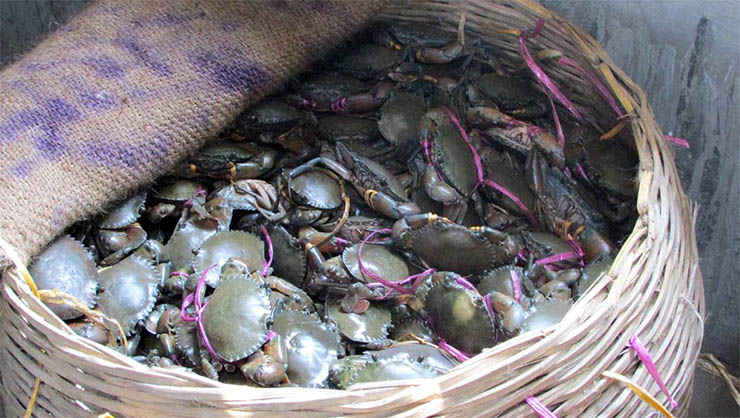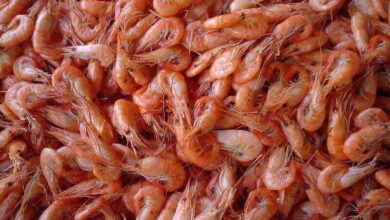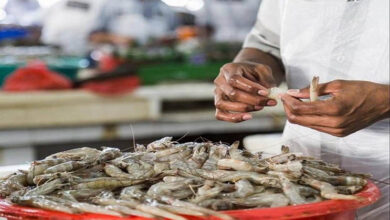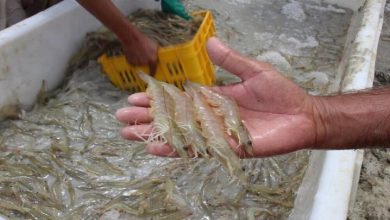
In Bangladesh, shrimp exports are slowly decreasing each year because of a drastic decline in production; where, mud crab and eel exports has increased in 2021-22.
Locally called “cuchia”, the freshwater eels are technically swamp eels rather than true eels.
The Bangladesh Crab Exporters’ Association’s secretary, Abul Kashem Gazi, said that “mud eels are in high demand in China. We fulfill less than ten percent of the demand for mud eels in China. A week’s supply can account for eight tons of exports. An increase in mud eel production would generate significant foreign earnings for Bangladesh.”
Furthermore, crab farming in Bangladesh, specially in Khulna, has increased, and it has emerged as a potential export earner due to its high demand in East and Southeast Asian countries.
Its main market is China, despite the fact that Bangladeshi crabs are imported by a variety of countries, including Hong Kong, Myanmar, Vietnam, Japan, and Malaysia.
“In Bangladesh, crabs can be grown in a long coastal belt, so the country has good potential. The 1.3 billion population of China provides huge opportunities for selling crabs during winter,” said Alam of ZF Trade International.
“The more we grow, the more exports we will be able to accomplish,” he added.
Here to note, for enhancing the crab industry in Bangladesh, the importance of crab hatchery is now very evident than any other time. During the production season, scarcity of crablets is hindering the development of this promising sector and incur potential losses of foreign exchange.
In contrast to the mud eel and crab producers and exporters, the shrimp industry is experiencing difficulties.
Data from the Khulna Office of Fish Inspection and Quality Control (FIQC) indicate that 24,100 tons of Bagda (P. monodon) and Galda (Macrobrachium rosenbergii) were exported from the Khulna region during the fiscal year 2021-22 and 19,900 tons during the fiscal year 2022-23. This indicates a gradual decline in production.
Many factors have contributed to the decrease in shrimp production in Khulna. This includes the decrease in brackish water sources, virus attacks, farmers’ unwillingness to adopt modern methods, and the inability to obtain disease-free fries.
A shrimp farmer in the Daulatpur area of Khulna stated that there is insufficient water in the water bodies to support shrimp production. Additionally, he noted that there is always an outbreak of virus infections.
Furthermore, shrimp farmers are also experiencing losses as a result of an increase in feed prices.
“Having suffered losses, no shrimp farmer wants to engage in shrimp farming anymore,” he added.
The Department of Fisheries (DoF)-Khulna reports that 38,892 farms are cultivating Galda shrimp in the district, covering 19,016.44 hectares (ha), but producing only 13,592 tons.
Based on statistics from the last five years, the production of shrimp has been continuously declining throughout Bangladesh, resulting in a decline in overall exports.
It is estimated that 39,706 tons of frozen shrimp were exported in the financial year 2016-17, which decreased to 36,168 tons in the fiscal year 2017-18. According to the latest data from Bangladesh Frozen Foods Exporters Association, exports decreased to 33,306 tons in 2018-19 and 30,036 tons in 2019-20.
Nevertheless, this expert believes that government patronage and regulations can bring shrimp farming back to its heyday.
Jaber Bin Abdul Bari
Department of Oceanography, NSTU




